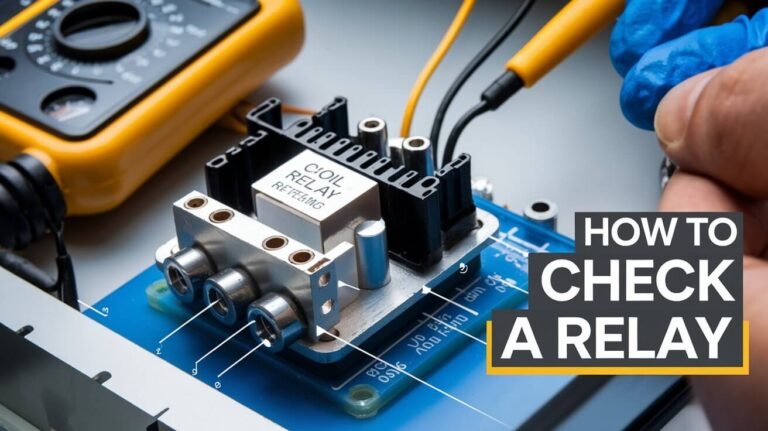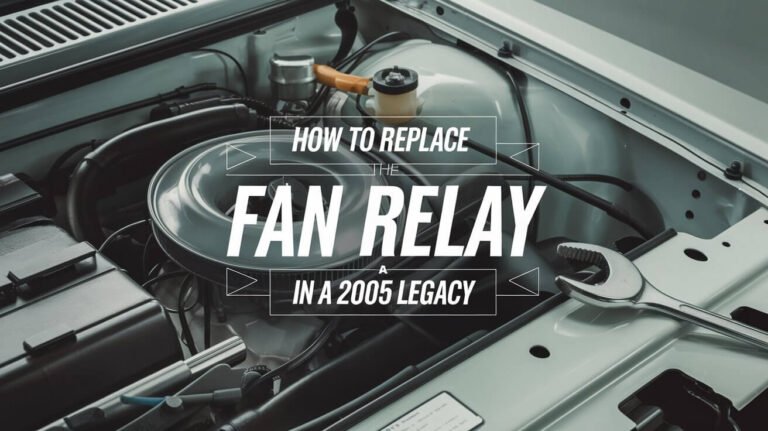
Relays are key in electrical systems, and knowing how much power they use is important. When they’re on, relays use electricity, and how much depends on the type. Understanding this helps make electrical systems more efficient, saving energy and improving performance.
Relays can use a lot of power, from a few milliamps when not in use to hundreds of milliamps when they are. For example, some relays online use 2.5mA when idle and 70mA when active. This shows why we need to think about relay power use when designing systems to save energy and work better.
Basic Relay Power Consumption Principles
Relays play a key role in many electrical systems. Knowing how much power they use is vital for their efficiency. The power used by relays comes from the coil and contact resistance. This can change based on the type of relay and how it’s used.
The power needed by the relay coil is a big part of its overall power use. A 5V relay usually uses between 70mA and 100mA. This means it consumes about 0.35W to 0.5W of power. Also, contact resistance can cause energy loss. Choosing relays with low contact resistance can help reduce these losses.
Factors Affecting Relay Power Consumption
Several things can change how much power a relay uses. These include the type of load, how often it’s used, temperature, and contact resistance. To cut down on power use, picking the right relay for the job is key. Also, keeping the relay well-maintained is important.
- Load type: Different loads need different amounts of power. Choosing a relay that fits the load can help save power.
- Duty cycle: The duty cycle of a relay greatly affects its power use. Adjusting the duty cycle can help reduce energy loss.
- Temperature: Temperature can impact a relay’s performance and power use. It’s important to keep it cool and manage its temperature well.
Understanding these factors and choosing the right relay, designers and engineers can make more efficient electrical systems. This helps save power and improve performance.
Types of Relays and Their Power Usage
There are many types of relays, each with its own power use. Electromagnetic relays are common in cars and factories. They use more power because of their moving parts.
Solid-state relays, on the other hand, use less power and last longer. They are fast and reliable, making them popular. Reed relays have no moving parts, which means they last even longer and use less power.
Here are some key points about these relays:
- Electromagnetic relays: high power consumption, mechanical elements, and relatively low speed
- Solid-state relays: low power consumption, high speed, and long lifespan
- Reed relays: low power consumption, no moving armature, and extended lifespan
Knowing how much power each relay type uses is important. It helps choose the right one for a job. Whether it’s electromagnetic, solid-state, or reed relays, each has its own benefits. They fit different needs in various fields.
Power Consumption in Different Relay States
Relays play a key role in many electrical systems. Their power use changes based on their state. Knowing how relays use power in different states helps save energy. We’ll look at how relays use power when they’re idle, active, and switching.
In standby mode, relays use very little power. This is because they’re not switching or carrying current. But, when they’re active, they use more power. This is because they need to keep the circuit running.
Standby Mode Energy Draw
In standby mode, the relay coil isn’t energized. The contacts also don’t carry current. This means the power use is very low, often in milliwatts or microwatts.
Active State Power Usage
When a relay is active, it uses more power. This is because it needs to keep the circuit going. The power use here is higher than in standby mode. It depends on the load, how often it switches, and the temperature.
Transition Phase Energy Requirements
The transition phase is when the relay switches states. It needs extra energy for this. This energy is brief but can affect the relay’s overall power use.
Knowing how relays use power in different states is key to saving energy. By choosing the right relay and reducing standby and active power use, we can make systems more efficient. This helps save energy and is better for the environment.
| Relay State | Power Consumption |
|---|---|
| Standby Mode | Low (milliwatts or microwatts) |
| Active State | Higher (influenced by load type, duty cycle, and temperature) |
| Transition Phase | Short-lived (influenced by switching energy) |
Factors Affecting Relay Power Draw
Several factors influence how much power a relay uses. The coil voltage, contact current, and how often it switches all matter. Knowing these helps make relay systems more efficient.
A higher coil voltage means more power used. But, a lower contact resistance can cut down on energy loss. The relay’s switching frequency is also key. If it switches too often, it uses more power.
Things like temperature and humidity can also change how much power a relay uses. Engineers use tools like multimeters and power meters to get accurate readings. This helps them design better relay systems.
- Coil voltage: Higher voltages generally lead to greater power consumption in relays.
- Contact current: Lower contact ratings may result in heightened energy losses due to heat buildup in relays.
- Switching frequency: Frequent switching can significantly increase power consumption, even if the relay struggles to keep up.
Understanding these factors and using the right tools, engineers can make efficient relay systems. These systems use less power but work reliably. The power a relay uses is calculated by P = V^2 / R, where P is power, V is voltage, and R is resistance. Knowing this helps pick the best relay for a job and ensures it works well.
Common Applications and Power Requirements
Relays are found in many fields, like cars, factories, and smart homes. In cars, they control things like windshield wipers and horns. Some cars even have over twenty relays, showing how vital they are.
In factories, relays manage big processes like making goods. They need strong relays that can handle big currents and voltages. Smart home relays let people control their homes easily, from lights to security.
Power Requirements for Different Applications
Each application needs different power levels. Car relays need less power than factory ones. But, the right power rating is key for safe and efficient work.
Regular relays can handle about 60W. But, power relays can take more current and voltage. This makes them perfect for demanding tasks.
| Application | Power Requirement |
|---|---|
| Automotive Relays | Lower power rating (e.g., 60W) |
| Industrial Relay Systems | Higher power rating (e.g., several hundred watts) |
| Smart Home Relays | Low to medium power rating (e.g., 10-100W) |
Knowing the power needs of each application is key. By looking at power ratings, environments, and switching times, we can pick the right relay. This ensures our systems work well, whether in cars, factories, or homes.
Power Efficiency Solutions for Relay Systems
Energy-efficient relays are key to cutting down power use in many areas. By using smart power-saving methods, users can cut down on energy waste. This also helps extend the life of their relay systems. For example, using transistors or optocouplers for low-power tasks can greatly lower power use.
Adding a resistor and capacitor to the relay coil can also save a lot of power. A test with a Goodsky MI-SS-112L 12VDC coil relay showed a 65% drop in current. This was from 45mA to 16mA with a 460 Ohm resistor and a 1000uF capacitor. This small change can make a big difference in power use over time, making it a good choice for saving energy.
Important tips for saving power in relay systems include: * Choose energy-efficient relays for low-power tasks * Use power-saving methods, like adding resistors and capacitors to the relay coil * Pick relays with the right coil resistance and voltage for your needs * Lower the switching frequency and cycle rate to save power * Make sure connections are right to avoid resistance and heat
| Relay Type | Power Consumption | Energy Efficiency |
|---|---|---|
| Electromechanical Relay | 45mA | Low |
| Energy-Efficient Relay | 16mA | High |
| Transistor-Based Relay | 10mA | Very High |
Using these power-saving tips, users can cut their energy use, save money, and help the planet. Whether in industrial settings, cars, or home appliances, using energy-efficient relays and smart power-saving methods can greatly improve relay system performance and efficiency.
Relay Power Consumption Calculations
To figure out how much power a relay uses, you need to know the right formulas and methods. The power a relay uses can be found by multiplying the voltage and current. For AC circuits, you also need to think about the power factor, which shows how voltage and current relate to each other.
For instance, a relay with 24V and 0.5A uses 12W. But, if it’s in an AC circuit, with 230V, 2A, and a power factor of 0.8, it uses 368W. Knowing these formulas is key to figuring out how much power a relay will use in different situations.
When figuring out relay power use, consider a few things:
- What kind of load it has
- How often it’s used
- The temperature it’s in
- The resistance of its contacts
These factors can really change how much power a relay uses. Using the right formulas and methods helps make sure your calculations are correct.
| Relay Type | Voltage Rating | Current Rating | Power Consumption |
|---|---|---|---|
| Small Signal Relay | 5V | 0.1A | 0.5W |
| Industrial Relay | 230V | 2A | 368W |
Using the right formulas and methods, and thinking about the factors that affect power use, you can make sure your calculations are right. This helps you make good choices when picking and using relays in your projects.
Troubleshooting High Power Consumption
High power consumption in relay systems can lead to higher energy costs and system damage. To solve these issues, it’s key to do an energy consumption diagnosis. Problems like wrong coil voltage, damaged contacts, or too many switchings can cause these issues.
Some common problems that lead to high power use in relay systems include:
Common Issues
- Incorrect coil voltage, which can lead to overheating and increased power draw
- Damaged contacts, resulting in increased resistance and power consumption
- Excessive switching frequencies, causing wear and tear on the relay and increasing power consumption
To find these issues, several methods can be used, including:
Diagnostic Methods
- Visual inspection of the relay and its components
- Measurement of coil voltage and current
- Analysis of switching frequencies and patterns
Doing a detailed energy consumption diagnosis and fixing relay power problems, we can lower power use. This makes the system more efficient and prevents damage. Regular checks and maintenance of the relay system can also spot and fix issues early.
Power-saving Techniques for Relay Circuits
Relay energy conservation is key in today’s tech world. Using power-efficient designs is a great way to save energy. For example, latched relays are good when the state changes rarely, cutting down power use. Also, setting up power-down modes and designing circuits wisely can help save energy.
Here are some ways to cut down power use in relay circuits:
- Choose relays with low coil impedance, like those with 137 ohms to 123 ohms at different voltages
- Use pulse-width modulation (PWM) control with frequencies between 20kHz to 100kHz for better power use
- Design circuits to lose less energy and need less current to stay on
Using these energy-saving methods, you can cut down your relay energy use a lot. For instance, using the holding current to keep the relay on can save about 75% of power compared to the pick-up current. Also, using high-capacity relays like Panasonic’s LF-G Series can help save energy in many applications.
| Relay Series | Switching Capacity | Application |
|---|---|---|
| LF-G Series | 33A at 250V AC | Industrial control systems |
| HE-S Series | 35A at 277V AC | Photovoltaic power generation systems |
| HE-V Series | 20A at 1000V DC | Solar and energy storage systems |
Conclusion: The Reality of Relay Power Usage
Relay power management shows that energy use can change a lot. This depends on the relay type and how it’s used. Even though relays can handle a lot, we must think about the power they need.
For small power needs, looking into other options might be smart. This could be solid-state relays or ways to save power. These steps help with relay power management and energy consumption considerations.
Knowing how much power a relay needs is key. It helps make sure relay systems work well and don’t cost too much. By understanding relay power use, we can make better choices. This leads to systems that are safe, efficient, and good for the environment.
FAQs
Do relays consume power?
Yes, relays use electrical energy when they’re turned on. The coil needs power to work. There are also losses due to contact resistance and switching.
What are the basic principles of relay power consumption?
The main ideas about relay power use are about the coil’s power needs and contact losses. These include inductive and capacitive effects during switching.
How do different types of relays compare in terms of power usage?
Electromagnetic, solid-state, and reed relays use different amounts of power. Each type has its own energy use. This is important when picking a relay for a job.
How does a relay’s power consumption vary in different operational states?
Relays use little power when they’re not working. They use more power when they are. Knowing this helps make relay systems more efficient.
What factors influence a relay’s power consumption?
Coil voltage, contact current, and how often they switch are key. These factors affect how much power a relay uses.
How do real-world applications affect relay power consumption?
The power needs of relays change based on where they’re used. This includes cars, factories, or homes. Knowing these needs helps design better relay systems.
What strategies can be used to improve the power efficiency of relay systems?
To make relay systems more efficient, use energy-saving designs. Also, look at using transistors or optocouplers for low-power jobs.
How can I accurately calculate relay power consumption?
To figure out relay power use, use math formulas. Apply them to real situations for accurate estimates and improvements.
What common problems can lead to excessive power consumption in relay systems?
Problems like wrong coil voltage or damaged contacts can raise power use. Finding these issues is key to keeping systems efficient.
What techniques can be used to reduce power consumption in relay circuits?
To cut power use in relay circuits, use latched relays for rare changes. Also, add power-down modes and design circuits for less energy use.




